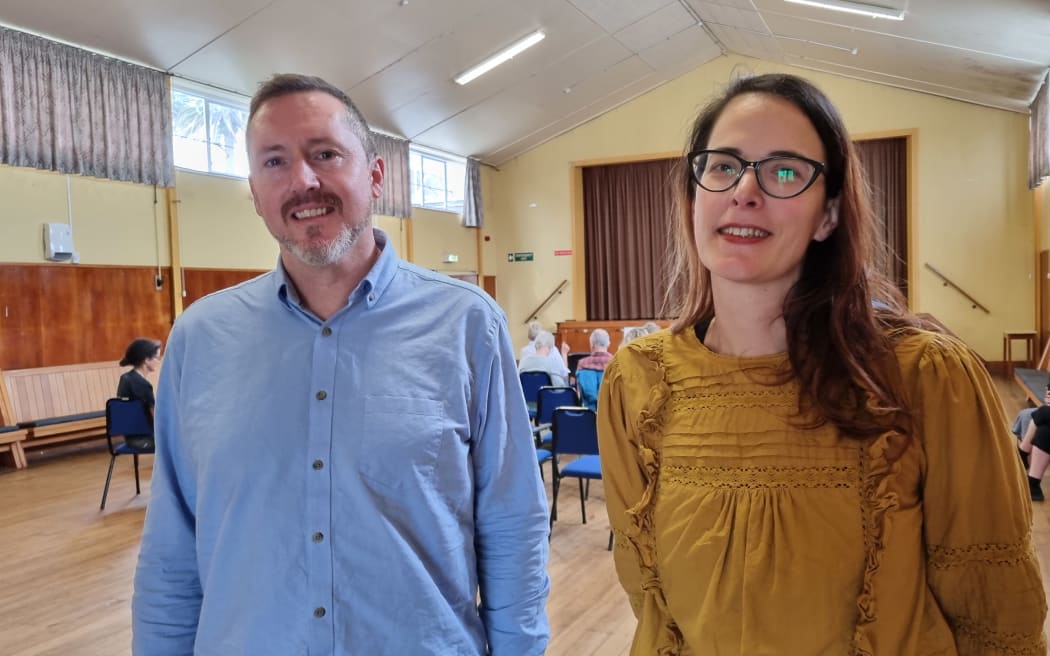Taranaki ripe for passenger rail revival

Members of the Save Our Rail lobby group, Patrick Rooney and Suraya Sidhu Singh. Photo: RNZ / Robin Martin Taranaki is ripe for a revival of passenger services, says lobby group Save Our Rail/ Save Our Rail Taranaki spokesperson Suraya Sidhu Singh told a meeting in New Plymouth that a rail corridor already connected the city to regional towns like Inglewood, Stratford, Eltham, Hawera and on to Whanganui, Palmerston North and Wellington.
Yet it has been decades since Taranaki had seen scheduled passenger services. Passenger services to New Plymouth ceased in 1983. That did not put off Suraya Sidhu Singh.
"Taranaki's got a lot of fantastic opportunities. The whole province is designed around rail," she said. "It was built this way and we've got some advantages here like most of the track is quite straight, which allows for faster speeds to be achieved, and there's a huge amount of community support."
Passenger rail would have enormous benefits to the community, she said. "Things like health, mobility, infrastructure resilience to these kinds of big climate change events that we are seeing, but nothing really happens unless it's driven by the community, and what we are wanting to do here is really understand what people actually want." Re-establishing rail would face challenges, because the line between Stratford and Taumaranui and onto the north was mothballed, and the Lepperton Waitara branch line was currently privately owned, Suraya Sidhu Singh said.
"Passenger rail is an inherently inter-regional thing, so we would definitely be looking at the connection from New Plymouth through to Marton which connects to the main trunk line." The first goal would be to re-establish the connection with New Plymouth and Marton and the main trunk line, she said. Save Our Rail co-founder Patrick Rooney said since passenger rail had been axed in Taranaki, there were now a lot more people along both the northern and southern routes out of the province, making it more viable than ever.
"If you look at Levin, for example, they're planning to house another 20,000 to 30,000 people there, so soon it will be one of the largest regional centres in the country and it has a direct line right through to New Plymouth." The healthy turnout in New Plymouth was similar to what the group had seen at meetings around the country, Rooney said. "So, I've just come back from the South Island where we had meetings in Dunedin, Timaru, Oamaru, Christchurch," he said.
"All of those meeting were full to capacity, so I think it absolutely shows there's a lot of interest and frustration and demand out there when it comes to people wanting to catch trains which don't exist." Sheryl Mckercher had come along to the New Plymouth meeting. "I'd love to see the trains come back again.
I think that was such a neat way to travel and it makes sense with the potholes we've got in the roads." Brian Story was on the same page. "For years in my younger days, there was quite a network and we as a family utilised the rail cars on a frequent basis.
"With our increase in population, and the only way we can get around being basically on a road where there's so many issues with road conditions and people's ability use them safely and we've got a rail network out there, so why not use it."